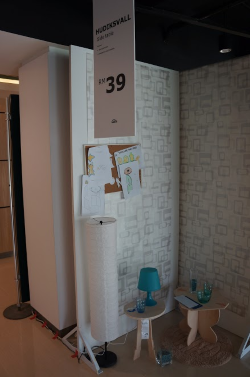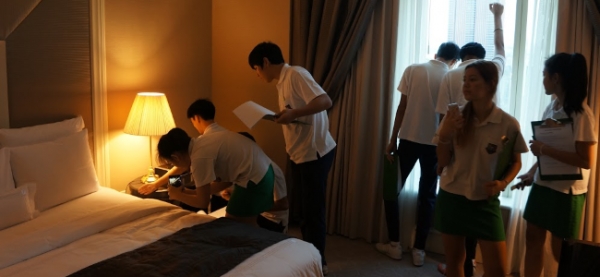"Our collaborative companies openly welcome working with our students."
One way we have been tackling this issue at Garden International School (GIS) in Kuala Lumpur is by attempting to contextualise all learning to show students the value of the subject and industry links that highlight possible future career paths. This is especially relevant considering the emphasis that has been placed on real world contexts and challenges in the recently released GCSE subject content.
In Design Technology, each year group has at least one project where students produce work that is directly linked to a real client or brief.
The range of topic areas is broad and nothing is forced to fit this contextualised industry link. Our collaborative companies openly welcome working with our students and thrive off giving feedback to help them develop. Currently the list of companies collaborating with the department include KL aquarium, WWF, SketchDrive, JW Marriott hotels, IKEA and Vagler. While some companies struggle to provide the time in their busy schedules, others closer to home can offer just as much real-like experience for the students, with links easier to manage, such as the school’s Early Years Centre where Year 7 students are currently designing pop-up reward cards for their younger peers, as well as learning paper engineering, problem-solving, client needs and CAD skills.
The concept of handing the work over at the end gives students an added pride in their work, as theirs may be the chosen card this time that gets delivered to households that are part of our school community. In other situations companies offer industry experience, designers give feedback to improve, stores help stock students’ work for trial sales, materials and resources are donated for use and video briefs are used to introduce topics.

At Key Stage 4, working with real clients takes on a much more important role. As most teachers would empathise with, trying to get students to manage their time and meet deadlines is always a trial. Working with real companies who will be assessing your designs during their monthly board-meeting means that you simply cannot afford to miss your school deadline or you have to answer to the MD or manager. This real-life pressure unsurprisingly encourages students to ensure their time is managed effectively. However, it’s not just during the creative process that ‘real’ companies are useful, being able to offer their advice about what will and will not work within their given industry; the ability to showcase work from students is a huge boost. Children love seeing their work displayed on classroom walls or in cabinets, and so when this work is showcased in stores and to the general public and they are given the opportunity to explain what they have done in person, it makes it even more special. Projects are usually started with a video from the client or a visit to the company. Clients are involved throughout the process as appropriate, usually after designing, development and manufacture.
The correct link-company is vital in the success of the industry links. Preparation and planning is important to ensure that both parties are able to commit time and energy into any project planned and that any constraints such as time are worked out.
Currently we have the following projects running with real-life links:
- Pop-up reward cards designed for an Early Years Centre.
- Design & make products to sell in a company gift shop with profits going to charity.
- Shop-window display designs.
- Sustainable furniture designed for a furniture company.
- Lighting designed for a hotel chain.
- Conceptual design using Sketchdrive to upload and feedback on their work.
Alongside the industry links of our projects we are also lucky to have a designer in residence who works from our classrooms once or twice a week. Johnno Ellison is a product designer who mainly uses computer-aided design (CAD) for his designs, which gives him the luxury of being able to work in any location with internet access. By having a professional designer on-site, students can speak with him and see some of his work that is permanently showcased while he offers his opinions, advice and skills in lessons as appropriate, giving students yet another insight into the importance of Design Technology.
Suggestions to get started
- It’s not just in Design Technology that real-life contextualised learning can take place, and I believe that the best place to start is within the school community. Finding out parents’ careers can open a wealth of opportunity. Having a business-card drop-bowl at reception or during parents’ evenings is a useful resource, as is sending a simple email or newsletter asking about careers.
- Don’t force it. Although it is tempting to get a company involved in your work, as it may be to have a guest-speaker, it needs to be relevant and an improvement on what can be offered by teaching staff alone. It is important to map out skills and learning requirements first before considering if external help could be added.
- Use technology. Videos work very well, and this method eliminates the need for schools or companies to alter schedules to fit the needs of both parties. Video-conferencing such as Skype now means that you are not limited to local companies to offer their expertise, and you can show students modern ways of communicating and collaborating used by multinational companies!
Do you use Contextualising Learning in your school? Share your experiences below.


